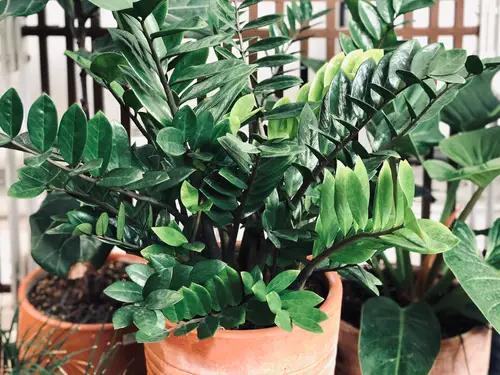ZZ plants are a popular houseplant due to their attractive, glossy leaves and low-maintenance care requirements. However, one common issue that ZZ plant owners may encounter is ZZ plant falling over. This can be a frustrating problem to deal with, but fortunately, there are several possible causes and solutions.
Understanding ZZ plant characteristics is important when trying to diagnose why the plant is falling over. ZZ plants have thick, fleshy stems that store water, making them drought-tolerant.
However, they are also susceptible to root rot if overwatered. Additionally, ZZ plants are known for their ability to thrive in low light conditions, but too little light can cause the stems to become weak and floppy.
Common causes of ZZ plant falling over include overwatering, inadequate lighting, and lack of support. Symptoms of an unhealthy ZZ plant may include yellowing or browning leaves, wilting or drooping stems, and a general lack of growth.
However, with proper care and attention, it is possible to fix a falling over ZZ plant and prevent future problems.
Key Takeaways
- ZZ plants can fall over due to overwatering, inadequate lighting, or lack of support.
- Symptoms of an unhealthy ZZ plant include yellowing or browning leaves, wilting or drooping stems, and a lack of growth.
- To fix a falling over ZZ plant, adjust watering and lighting, provide support, and take steps to prevent future problems.
Check out these other top posts:
- Why Is My Zebra Plant Dropping Leaves?
- Why Is My Snake Plant Growing Sideways?
- Why Is My Snake Plant Getting Soft?
Understanding ZZ Plant Characteristics
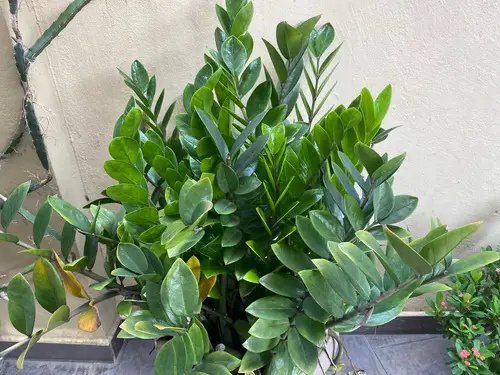
ZZ plants are a popular houseplant known for their glossy green leaves and easy-to-care-for nature. Native to Eastern Africa, these plants are a type of succulent and have unique characteristics that require specific care. Understanding these characteristics is crucial to keeping your ZZ plant healthy and preventing it from falling over.
1. Light Requirements
ZZ plants are tolerant of a wide range of lighting conditions, making them well-suited to indoor growing. However, they can quickly become leggy if not given enough light.
When placing the plant in your house, choose a bright, indirect light spot, preferably in a room with south-facing windows. If the plant is placed in low-light conditions for too long, it will instinctively stretch towards the light and become leggy and lean.
2. Watering Needs
ZZ plants are sensitive to overwatering and can develop root rot if not watered properly. It is best to allow the soil to dry out between waterings to prevent this from happening.
ZZ plants store water in their rhizomes, so they can go several weeks without being watered. When watering, make sure to thoroughly saturate the soil and allow any excess water to drain out of the bottom of the pot.
3. Temperature and Humidity Preferences
ZZ plants prefer warm temperatures between 60-75°F (15-24°C) and moderate humidity levels. They can tolerate lower temperatures, but prolonged exposure to cold temperatures can cause the plant to suffer.
It is important to keep the plant away from drafts and cold windows during the winter months. ZZ plants do not require high humidity levels, but they can benefit from occasional misting or being placed near a humidifier.
By understanding the light, watering, temperature, and humidity needs of your ZZ plant, you can provide it with the care it needs to thrive and prevent it from falling over.
Why Is My ZZ Plant Falling Over – 13 Common Problems
ZZ plants are known for their resilience and ability to thrive in low-light conditions, but they can still experience issues that cause them to fall over. Here are some common causes of ZZ plant falling over:
1. Overwatering

Overwatering is one of the most common reasons for drooping leaves on any plant, including ZZ plants. ZZ plants are sensitive to too much water, and overwatering or over misting your ZZ plant leads to root rot, which can cause your plant to fall over since it’s not receiving important nutrients.
To avoid this, ZZ plants should be watered only when the top inch of soil is dry. Water deeply until liquid comes out of the drainage holes on the pot, and then let the soil dry out before watering again.
2. Underwatering
Underwatering can also cause ZZ plant leaves to fall off and the plant to droop. ZZ plants should be watered regularly, but not too often. If the soil is too dry, the plant will not have enough water to support its leaves and stems. ZZ plants prefer to be slightly dry between watering, so it’s important to let the soil dry out before watering again.
3. Direct Sunlight
While ZZ plants can tolerate low light conditions, they can be sensitive to direct sunlight. Direct sunlight can cause the leaves to burn and the plant to droop. ZZ plants prefer bright, indirect light, so it’s best to place them near a window that gets bright, filtered light.
4. Low Light Conditions
On the other hand, ZZ plants can also fall over in low light conditions. ZZ plants need enough light to photosynthesize and produce energy. If they don’t get enough light, they may become weak and droopy. ZZ plants prefer bright, indirect light, so it’s important to place them near a window that gets bright, filtered light.
5. Cold Temperature
Cold temperatures can also cause ZZ plants to fall over. ZZ plants prefer warm temperatures and can be sensitive to cold drafts. If the temperature drops below 60 degrees Fahrenheit, the plant may become stressed and droop. It’s important to keep ZZ plants in a warm, draft-free location.
6. Excess Heat
While ZZ plants prefer warm temperatures, they can also be sensitive to excess heat. High temperatures can cause the soil to dry out quickly and stress the plant, which can cause it to droop. ZZ plants should be kept in a location with consistent, moderate temperatures.
7. Low Humidity
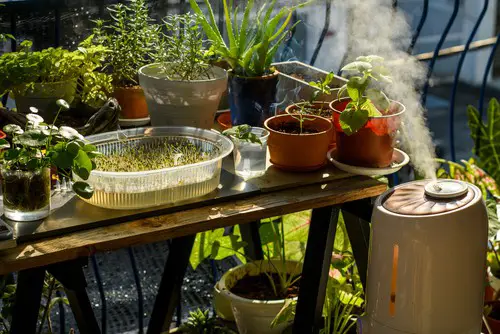
Low humidity can also cause ZZ plants to fall over. ZZ plants prefer moderate humidity levels, and if the air is too dry, the plant may become stressed and droop. To increase humidity levels, ZZ plants can be placed on a tray of pebbles filled with water or misted regularly.
8. Stress
Stress can cause ZZ plants to fall over. Stress can be caused by a variety of factors, including changes in temperature, light, and humidity. ZZ plants should be kept in a consistent environment to avoid stress.
9. Fertilizer Issues
ZZ plants can also experience issues with fertilizer. Overfertilizing can cause the plant to become stressed and droop. ZZ plants should be fertilized only once a month during the growing season with a balanced fertilizer.
10. Root Rot
Root rot can also cause ZZ plants to fall over. Root rot is caused by overwatering or poor drainage, which can cause the roots to rot and the plant to become weak. ZZ plants should be planted in well-draining soil and pots with drainage holes to avoid root rot.
11. Disease
ZZ plants can also be susceptible to disease, which can cause them to fall over. Common diseases that affect ZZ plants include bacterial leaf spot and root rot. ZZ plants should be inspected regularly for signs of disease, and infected plants should be isolated and treated immediately.
12. Physical Damage
Physical damage can also cause ZZ plants to fall over. ZZ plants can be damaged by pets or children, or by accidentally knocking them over. It’s important to keep ZZ plants in a safe location and to handle them carefully.
13. Transplant Shock
Transplant shock can also cause ZZ plants to fall over. ZZ plants should be transplanted only when necessary, and care should be taken to avoid damaging the roots. After transplanting, ZZ plants may become stressed and droop, but they should recover within a few weeks.
Symptoms of Unhealthy ZZ Plant
ZZ plants are generally low-maintenance houseplants that can thrive in various conditions. However, when ZZ plants start to show signs of stress, it can be alarming for plant owners. Here are some common symptoms of an unhealthy ZZ plant to look out for:
1. Drooping or Falling Over

One of the most common symptoms of an unhealthy ZZ plant is drooping or falling over. This can be caused by a variety of factors, including overwatering, underwatering, lack of sunlight, or root rot.
ZZ plant stems can also fall over due to light problems, severe under-watering, lack of or excessive fertilizer, cold stress, transplant stress or trauma. The key to preventing and fixing a ZZ plant with stalks that are drooping is to correctly identify and treat the underlying problem.
2. Yellow or Brown Leaves
Yellow or brown leaves are another common symptom of an unhealthy ZZ plant. This can be caused by overwatering, underwatering, too much direct sunlight, or pests. If your ZZ plant is getting a lot of direct sunlight per day, leaf scorching, rather than overwatering is a more likely cause of this ZZ plant problem.
Irregular yellow spots on your ZZ plant are quite often caused by pests, as they feed on the foliage. Carefully inspect both sides of the leaves and stems for any signs of pests.
3. Curling Leaves
Curling leaves are a sign that your ZZ plant is not getting enough water. This can be caused by underwatering or by the plant being in a too low humidity environment. ZZ plants prefer to be in a moist environment, but not waterlogged.
4. Stunted Growth or Wilting
Stunted growth or wilting are signs that your ZZ plant is not getting enough nutrients. This can be caused by underwatering, overwatering, or lack of fertilizer. ZZ plants need to be fertilized every two to three weeks during the growing season to maintain healthy growth.
How to Fix a Falling Over ZZ Plant
When a ZZ plant starts to fall over, it is usually a sign that something is wrong. ZZ plants are generally hardy and easy to care for, but they do have some specific needs that must be met to keep them healthy and upright. Here are some steps to take to fix a falling over ZZ plant.
1. Check the Soil and Watering

One of the most common reasons for a ZZ plant to fall over is overwatering or underwatering. Check the soil to see if it is dry or waterlogged. If the soil is dry, water the plant thoroughly, making sure that excess water drains out of the pot’s drainage holes.
If the soil is waterlogged, let it dry out before watering again. It’s important to maintain a consistent watering schedule, as ZZ plants don’t like to be left too dry or too wet for extended periods.
2. Repotting
If the soil is compacted and not aerated, it can lead to root rot and cause the plant to fall over. Repotting the ZZ plant in fresh, well-draining soil can help it recover. Make sure the new pot has drainage holes to prevent water from pooling at the bottom.
3. Light and Temperature
ZZ plants prefer bright, indirect light, but they can also tolerate low light conditions. If the plant is not getting enough light, it may become weak and fall over.
Move the plant to a brighter location, but avoid direct sunlight, which can scorch the leaves. ZZ plants also prefer warm temperatures between 65-75°F (18-24°C) and can suffer in extreme heat or cold.
4. Humidity and Fertilizer
ZZ plants are not too picky about humidity levels, but they can benefit from a slightly more humid environment. Placing a tray of water near the plant or misting it occasionally can help increase humidity levels.
ZZ plants also don’t require frequent fertilization, but a light feeding every few months can help keep the plant healthy and strong.
5. Photosynthesis and Oxygen
ZZ plants produce oxygen during photosynthesis, which is essential for healthy growth. Ensure that the plant has access to enough light and carbon dioxide to photosynthesize properly.
ZZ plants also benefit from good air circulation, which can help prevent stagnant air from building up around the plant and causing it to fall over.
By following these steps, you can fix a falling over ZZ plant and help it regain its strength and vitality. With proper care and attention, ZZ plants can thrive and become a beautiful addition to any indoor space.
Preventing ZZ Plant Problems

Preventing ZZ plant problems is much easier than fixing them. By following some simple guidelines, you can keep your ZZ plant healthy and happy. Here are some tips to prevent ZZ plant problems:
1. Watering Issues
Overwatering is one of the most common reasons for ZZ plant problems. ZZ plants are drought-tolerant and can go for long periods without water. Water your ZZ plant only when the soil is completely dry. Use a moisture meter to check the soil moisture level.
2. Transplanting and Acclimation
Transplanting can be stressful for ZZ plants, so it’s important to do it correctly. Use a pot that is only slightly larger than the current one. Make sure the new pot has drainage holes. When transplanting, be gentle with the roots and avoid damaging them.
When you bring a new ZZ plant home, it’s important to acclimate it to its new environment. Place the plant in a bright, indirect light location and gradually increase the amount of light it receives over a few weeks.
3. Temperature and Light
ZZ plants prefer temperatures between 60 and 75 degrees Fahrenheit. Keep the plant away from heating and cooling appliances, as well as drafts. ZZ plants can tolerate low light conditions, but they will grow faster and be healthier with bright, indirect light. Avoid exposing the plant to direct sunlight, as it can scorch the leaves.
4. Humidity
ZZ plants prefer moderate humidity levels. If the air in your home is dry, you can increase humidity by placing a tray of water near the plant or using a humidifier.
5. Other Considerations
Here are some other things to keep in mind when caring for your ZZ plant:
- Use a digital thermometer to monitor the temperature around the plant.
- Use a moisture meter to check the soil moisture level.
- Use LED grow lights to supplement natural light if necessary.
- Use a pot that is only slightly larger than the current one.
- Avoid repotting too often, as ZZ plants prefer to be slightly pot-bound.
- Fertilize your ZZ plant sparingly, as too much fertilizer can burn the roots.
- Keep the plant away from pets and children, as ZZ plants are toxic if ingested.
By following these guidelines, you can prevent most ZZ plant problems and keep your plant healthy and happy.
Dealing with ZZ Plant Pests and Diseases

ZZ plants are generally hardy and resistant to most pests and diseases, but they can still be susceptible to certain issues. Here are some common problems and how to deal with them:
1. Pests
ZZ plants may occasionally attract pests like aphids, mealybugs, and fungus gnats. These pests can be removed by wiping the leaves with a damp cloth or spraying the plant with a mixture of water and dish soap. For more severe infestations, insecticidal soap or neem oil can be used.
Another common pest that may affect ZZ plants is brown scale insects. These can be removed with rubbing alcohol and cotton balls or swabs. It’s important to check the plant regularly for any signs of infestation and take action as soon as possible to prevent the pests from spreading.
2. Diseases and Fungi
Overwatering and poor drainage can lead to root damage and the growth of anaerobic bacteria, which can cause the roots to rot. This can result in the ZZ plant falling over or the leaves turning yellow or brown. To prevent this, ensure that the plant is not overwatered and that there is adequate drainage.
If the plant does develop root damage or rot, it may be necessary to repot it in fresh, well-draining soil. Cut away any damaged roots and treat the remaining healthy roots with a fungicide before repotting.
Nutrient deficiencies can also cause problems for ZZ plants, such as yellowing leaves or stunted growth. To address this, ensure that the plant is getting the appropriate amount of light and water, and consider fertilizing it with a balanced, slow-release fertilizer.
3. Common Problems
Some other common problems that ZZ plants may experience include:
- Yellowing leaves: This is often a sign of overwatering or nutrient deficiencies.
- Drooping stems: This can be a sign of underwatering or root damage.
- Brown leaf tips: This can be caused by dry air or overfertilization.
- Lack of growth: This can be caused by insufficient light or nutrient deficiencies.
By being vigilant and addressing any issues as soon as they arise, ZZ plant owners can keep their plants healthy and thriving.
ZZ Plant Care Tips for Healthy Growth
ZZ plants are known for their low maintenance and resilience, but they still require proper care to maintain healthy growth. Here are some ZZ plant care tips to keep your plant thriving.
1. Light
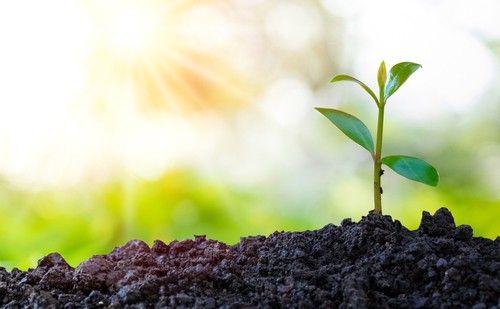
ZZ plants prefer bright, indirect light. Insufficient light can cause the plant to become leggy and weak, while too much direct sunlight can scorch the leaves. Curtains or blinds can be used to filter the light if necessary.
During the growing season, which is from early spring to mid-autumn, the ZZ plant will benefit from a few hours of direct sunlight each day.
2. Watering
ZZ plants are drought-tolerant, but they still require regular watering. Over-watering can lead to root rot and under-watering can cause the leaves to droop and fall off. Water the plant when the top inch of soil is dry to the touch. It’s important to ensure that the pot has proper drainage to prevent waterlogged soil.
3. Soil and Fertilizer
ZZ plants prefer well-draining soil and can become root-bound if they outgrow their pot. Repotting every two to three years can prevent this issue. Fertilizing once a month during the growing season with a balanced fertilizer can also promote healthy growth.
4. Temperature
ZZ plants prefer temperatures between 60-75°F (15-24°C) and are sensitive to hot or cold drafts. Placing the plant near a window or door can cause the leaves to curl or fall off. It’s important to keep the plant away from air conditioning vents and heaters.
5. Maintenance
Removing older leaves and trimming leggy stems can promote healthy growth and prevent the plant from becoming too top-heavy. Neglecting the plant can lead to pest infestations and other issues. Regularly inspecting the plant for any signs of damage or disease can prevent issues from escalating.
By following these ZZ plant care tips, you can maintain healthy growth and prevent your plant from falling over or becoming stressed.
Frequently Asked Questions
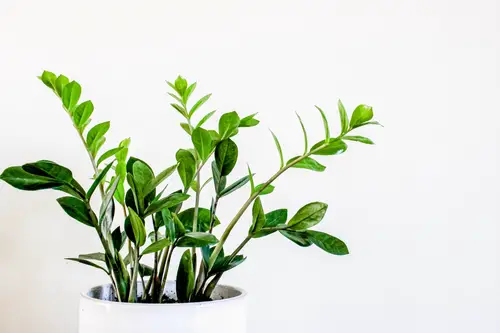
How do you fix a leaning ZZ plant?
If your ZZ plant is leaning to one side, it may be due to uneven light exposure. To fix this, rotate the plant every few weeks to ensure that all sides receive equal light. If the leaning is severe, you can also try staking the plant upright with a bamboo stick or tying it to a support.
How do you strengthen a ZZ plant?
To strengthen a ZZ plant, ensure that it is receiving enough light and water. You can also fertilize it with a balanced, all-purpose fertilizer every few months during the growing season.
Additionally, repotting the plant into a larger pot with fresh soil can give it more room to grow and strengthen its roots.
What does a ZZ plant look like when it needs water?
When a ZZ plant needs water, its leaves may become droopy and wilted. The plant may also show signs of yellowing or browning on the leaves. To check if your ZZ plant needs water, stick your finger into the soil about an inch deep. If the soil feels dry, it’s time to water the plant.
How do you fix a droopy ZZ plant?
To fix a droopy ZZ plant, water it thoroughly and ensure that it is receiving enough light. You can also try repotting the plant into a larger pot with fresh soil to give it more room to grow. If the drooping persists, check for any signs of root rot or pest infestations.
Will droopy ZZ plant leaves recover?
Yes, droopy ZZ plant leaves can recover if the underlying issue is addressed. Ensure that the plant is receiving enough water and light, and check for any signs of root rot or pest infestations. Once the issue is resolved, the plant should begin to recover and produce healthy new growth.
Why are my ZZ plant stems too heavy?
If your ZZ plant stems are too heavy, it may be due to overwatering or overfertilizing. This can cause the plant to produce weak, leggy growth that cannot support its own weight.
To fix this, ensure that the plant is receiving the correct amount of water and fertilizer, and consider repotting it into a larger pot with fresh soil.

Hey, I’m Lisa and I’ve been an avid gardener for over 30 years. I love writing, talking and living in the garden! Feel free to connect with me on my socials below

